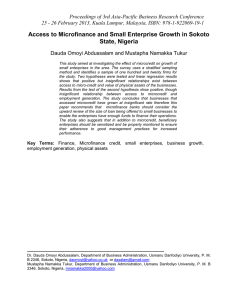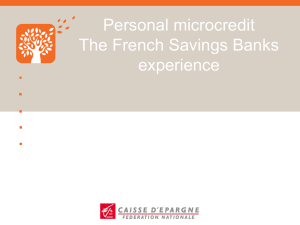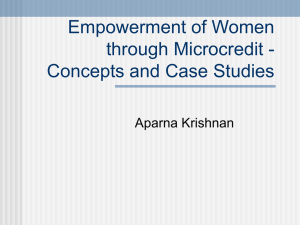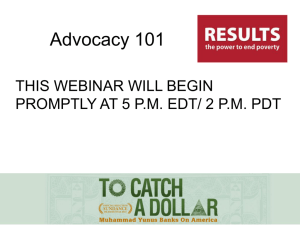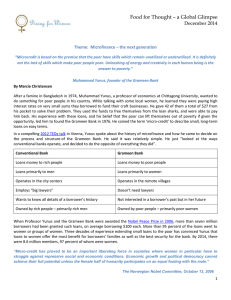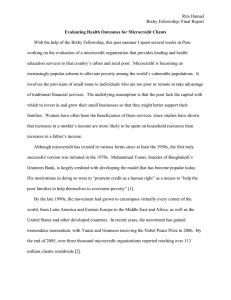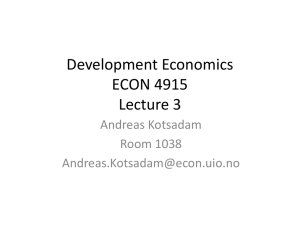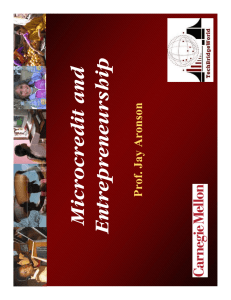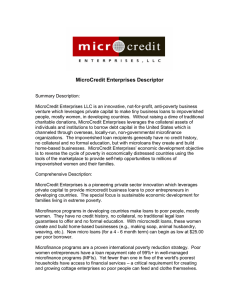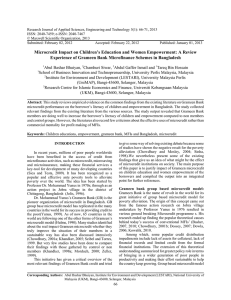Alternative Development
advertisement
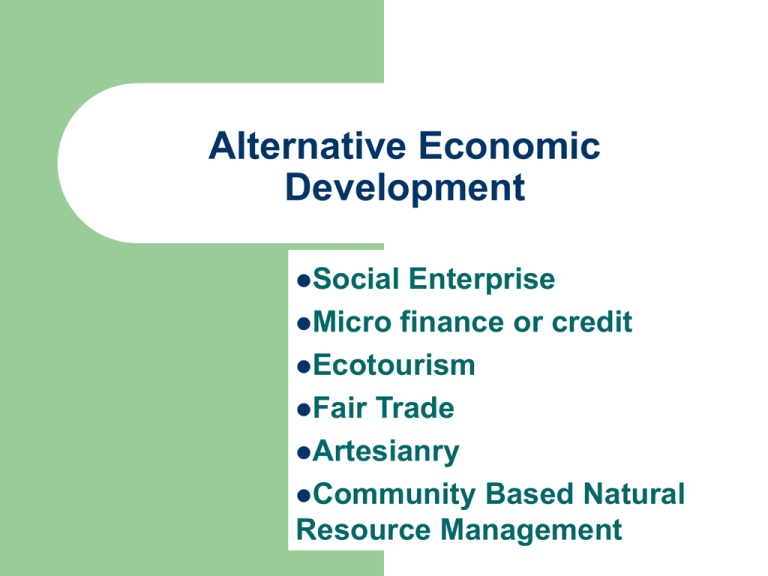
Alternative Economic Development Social Enterprise Micro finance or credit Ecotourism Fair Trade Artesianry Community Based Natural Resource Management Social Enterprise Basic principle: – – – for profit business Profits go towards social development/social justice agendas Values driven Intersection of – – corporate responsibility movement (http://www.hbs.edu/socialenterprise) self sustaining non-profits (http://www.sealliance.org/index.cfm Fundación Social-Colombia Foundation that owns a group of 14 for-profit businesses – Originated in 1911: Father Jose Maria Campoamor: – – Finance, construction, health, recreation, communications Circulo de Obreros de Bogota Caja social: small scale savings and credit program Now: – – $1.8 billion in assets $35 million annual profits One of FS’s subsidiaries: Banco Caja Social headquartered in Bogota 122 branches in 40 cities throughout Colombia. total assets of $510 million/ 10th largest commercial bank in the country 95% of its clients are individuals, either salaried or self employed. 78% of them make less than $5,000 annually 70 percent have only basic education. Homes and business represent the largest portfolio of BCS. Four pillars of FS Companies Social Programs Macro Influence “thought production” FS Social programs Focus on poorest, employ holistic replicable strategies with long term time frames Basic goals – – – – Social harmony Consolidation of strong, autonomous and democratic community organization Higher quality of life Full and active participation of poor people FS Social Programs 10 programs/5 themes: – – – – – integrated community development Income generation Recycling and environment Education Communication Community Development – – – – Form a community organization Develop programs according to community priorities Fundacion staff train and advise Neighborhood centers become geographical focus of organization FS Social Programs Enterprise: – – Recycling and Environment – Waste handled by businesses/generates income and cleaner environment Communication: – train small businesses in efficient, competitive manufacturing Link into trade networks Network of teachers, mayors community leaders collaborate on messages to strengthen democratic values Education – Broad based education is a right/contributes to popular organizing: adults and children FS: 2 other pillars Macro influence: – works to influence state level policies, legislation and programs that address “structural” inequalities. – Education laws Social security Venue to expand citizen voice in government Thought production – Encourages all employees and participants to contribute to creative ‘research and development’ Citizen based research and planning Micro finance/credit: wide range of forms*--need to specify which one Traditional informal microcredit (such as, moneylender's credit, pawn shops, loans from friends and relatives, consumer credit in informal market, etc.) Microcredit based on traditional informal groups (such as, tontin, su su, ROSCA, etc.) Activity-based microcredit through conventional or specialised banks (such as, agricultural credit, livestock credit, fisheries credit, handloom credit, etc.) Rural credit through specialized banks. *Mohammed Yunus categorization Micro finance/credit: wide range of forms * Cooperative microcredit (cooperative credit, credit union, savings and loan associations, savings banks, etc.) Consumer microcredit Bank-NGO partnership based microcredit. Grameen type microcredit or Grameencredit. Other types of NGO microcredit. Other types of non-NGO non-collateralized microcredit Grameen Bank http://www.grameen-info.org/ Structures of inequality and poverty are KEY: “based on the premise that the poor have skills which remain unutilized or under-utilized. It is definitely not the lack of skills which make poor people poor. Grameen believes that the poverty is not created by the poor, it is created by the institutions and policies which surround them. In order to eliminate poverty all we need to do is to make appropriate changes in the institutions and policies, and/or create new ones” Disbursements: – – Since 1976: $4.18 billion, $3.78 billion repaid so far Projected 2004 disbursement: $445 million Grameen Bank “credit as a human right” help poorest families (esp. women) to help themselves to overcome poverty. creating self-employment for incomegenerating activities and housing for the poor, as opposed to consumption. Grameen Bank alternative credit approach challenge to the conventional banking which rejected the poor by classifying them to be "not creditworthy". – – – – not based on any collateral, or legally enforceable contractsbased on "trust", bank should go to the people. All loans are to be paid back in installments (weekly, or bi-weekly). Generally these loans are given through non-profit organizations or through institutions owned primarily by the borrowers. GB Political and Social Agenda Building social capital. In order to obtain loans a borrower must join a group of borrowers. Political and leadership capacity building: annual election of group and centre leaders, electing board members when the institution is owned by the borrowers. “16 decisions” http://www.grameeninfo.org/bank/the16.html. – Now, not mandated, but process of intensive discussion among the borrowers is encouraged to take these decisions seriously and implement them. human capital and concern for protecting environment. children's education, to bring technology, like mobile phones, solar power, and promote mechanical power to replace manual power. SEWA: Self Employed Women’s Association in India www.sewa.org

